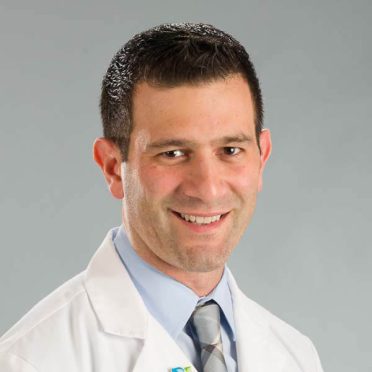Our weekly NFL report evaluates injuries to players of local (Patriots, Giants and Jets) or national interest with commentary by a sports orthopedic specialist from the Bone & Joint Institute at Hartford Hospital.
Player: Andrew Luck, Indianapolis Colts quarterback.
Injury: Torn labrum in right (throwing) shoulder.
How it happened: Lot of mystery here. Luck initially injured the shoulder in the third game of the 2015 season. Colts owner James Irsay suggests Luck aggravated it in a Week 2 loss last season to the Broncos when trying to tackle Denver’s Aqib Talib on an interception return. Online conspiracy theories include a possible snowboarding accident as the actual cause.
Whatever. But why did it take so long to address the injury? Luck had surgery in January, with Irsay promptly tweeting, “Will be ready for season!”
Wrong!
Luck has missed the Colts’ first three games, but after early reports that he might return to practice this week, Colts Coach Chuck Pagano said Luck was still “one week away.”
This still represents a significant turnaround from previous speculation that he could miss the entire season and might even want out of Indianapolis. Meanwhile, the Colts have been starting Jacoby Brissett, Tom Brady’s former backup, acquired in a trade with New England. Without Luck, the Colts are 1-2 after a 31-28 victory Sept. 24 over the Cleveland Browns.
Expected time missed: Other than declaring Luck out each week, the Colts haven’t been saying much. After Luck is cleared to start throwing a football, it would take several weeks before he’s cleared to actually play in a game.
Dr. Clifford Rios, Bone & Joint Institute orthopedic surgeon and board-certified in sports medicine: “The best-case scenario would be a good-as-new shoulder, but many elite throwers can have difficulty reaching their pre-injury level. An injury like this can shorten career length, but not all labral tears are the same. A larger tear, or tear of the superior labrum may be more problematic.”
What is a torn shoulder labrum?: The labrum, the cartilage around the arm socket, supports the shoulder joint and gives the arm socket sufficient depth to fit the arm bone and facilitate movement. A quarterback, through both repeated throws and being pounded into the ground by the opposing defense, is particularly vulnerable to shoulder joint tears.
Think about a quarterback’s throwing motion. Rotating the arm outward when preparing to throw contracts the biceps and drags on the labrum. (Baseball pitchers and tennis players also experience this injury.) For the non-athlete, lifting heavy objects can result in a torn labrum.
When it happens to an athlete, the injury is often described as the shoulder popping out of socket or a feeling that something is “catching.” It’s a sensation than signals the beginning of prolonged inactivity.
“Depending on the size or extent of the labral tear,” says Dr. Rios, “you can expect 6-8 months before a throwing athlete is ready to return to play.”
Because labral tears are difficult to see, your doctor will request a diagnostic test such as an MRI that will show shoulder tissues and a CT scan that uses a special dye that outlines the labrum. With a CT scan, a type of computer-enhanced X-ray, the dye reveals the outline of the labrum.
Two types of should labrum tears:
1. Superior Labral Anterior to Posterior, or SLAP: A tear often attributed to repetitive motion, normal wear and tear, age or acute trauma.
Common types of SLAP tears:
Type 1: Fraying at the top of the labrum, though it remains attached to the glenoid (part of the shoulder). Probable cause: Aging. Treated non-surgically.
Type 2: Labrum and biceps tendon separated from the glenoid’s top. Usually repaired with arthroscopic surgery.
Type 3: The torn labrum can sag into the shoulder joint as the biceps tendon remains intact. Usually treated arthroscopically.
Type 4: A tear that reaches into the biceps tendon. The amount of damage to the biceps tendon determines the treatment.
Recovery/Treatment: Recovery for most patients who undergo labrum surgery is nine months to one year.
Acute pain: 4-6 weeks. (This includes difficulty sleeping.)
Strengthening/stretching: Three to four months. Continued discomfort, however minimal, in the shoulder.
Final stage: 6-12 weeks. Adjusting to a new lifestyle of maintenance exercise.
“Ongoing strength and conditioning is part of an elite thrower’s workout plan” says Dr. Rios. ” Once healed, he will continue his strength program as usual.”
2. Bankart Tear: A byproduct of a shoulder dislocation, usually in a patient under 30 years old. This injury can be teated with rest, followed by physical rehabilitation. If surgery is required, your doctor can reattach the torn ligament to the shoulder socket. Because the labrum does not heal perfectly, this type of injury can leave you susceptible to another shoulder dislocation. (Note: Luck did not have a shoulder separation.)
Some players can play with a torn labrum, as Luck apparently did last season, depending the injury’s severity. For some, a shoulder brace or harness can help by protecting the shoulder and limiting movement. Pain medication and over-the-counter anti-inflammatories can be helpful, too.
Labrum Surgery: A small tear that “catches” as you move your shoulder is usually removed. In this arthroscopic procedure, called a labral debridement, the frayed edges and any loose segments of the labrum are removed.
A larger tear could require repair instead of removal. Sometimes your doctor will reattach the labrum, anchoring into the bone surrounding the shoulder joint, using an arthroscope.
Dr Clifford Rios, a sports medicine surgeon with Orthopedic Associates of Hartford, is Site Director for orthopedic resident education at the Bone & Joint Institute. Click here to find out why the Bone & Joint Institute is the athlete’s choice, with a Motion Lab for performance analysis, the area’s most comprehensive sports rehabilitation facility and 30 fellowship-trained orthopedic surgeons.


